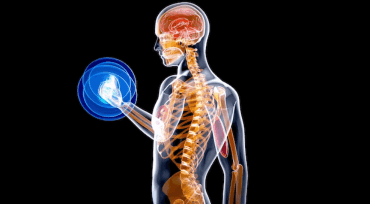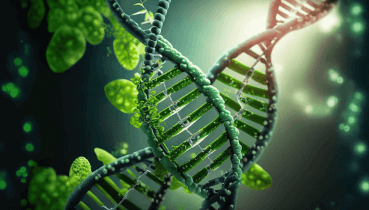Question
a.
only found between proline residues
b.
usually cis unless proline is the next amino acid
c.
usually trans unless proline is the next amino acid
d.
is planar because of steric hinderance
Posted under Biochemistry
Interact with the Community - Share Your Thoughts
Uncertain About the Answer? Seek Clarification Here.
Understand the Explanation? Include it Here.
Q. The peptide bond in proteins is
Similar Questions
Explore Relevant Multiple Choice Questions (MCQs)
Q. The molecular formula for glycine is C₂H₅O₂N. What would be the molecular formula for a linear oligomer made by linking ten glycine molecules together by condensation synthesis?
View solution
Q. Which of the following is an example of tertiary structure in a protein?
View solution
Q. The peptide, Val-Lys-Glu-Met-Ser-Trp-Arg-Ala, was digested with cyanogen bromide (CNBr) to produce:
View solution
Q. If the F and Y angles of each peptide unit in a protein are known, which of the following may also be determined?
View solution
Q. The different orders of protein structure are determined by all of the following bond types except
View solution
Q. The heme is held in place by a bond between
View solution
Q. Disulfide bonds most often stabilize the native structure of
View solution
Q. Secondary structure in protein refers to
View solution
Q. Heme is the binding pocket of myoglobin and hemoglobin and is composed of
View solution
Q. What is the effect of a decrease in pH on hemoglobin oxygen affinity?
View solution
Q. What is the proportion of glycine residues in collagenous regions?
View solution
Q. An oil drop with a polar coat is a metaphor referring to the three dimensional structure of
View solution
Q. What was the first protein whose complete tertiary structure was determined?
View solution
Q. The peptide bond in proteins is
View solution
Q. In β-pleated sheet structures neighbouring
View solution
Q. The same peptide, Val-Lys-Glu-Met-Ser-Trp-Arg-Ala. was digested with chymotrypsin to produce
View solution
Q. Unpaired H-bond donors and acceptors are found in the hydrophobic core of a protein
View solution
Q. For the unfolding reaction of Protein G, ΔH° =210.6 kJ/mol, this means that
View solution
Q. Attractive Vander Waals forces occur between
View solution
Q. Which of the following forces is the most favorable for protein folding?
View solution
Recommended Subjects
Are you eager to expand your knowledge beyond Biochemistry? We've handpicked a range of related categories that you might find intriguing.
Click on the categories below to discover a wealth of MCQs and enrich your understanding of various subjects. Happy exploring!








